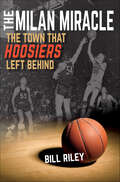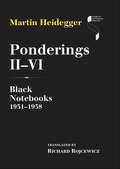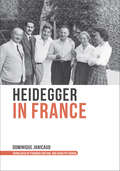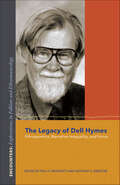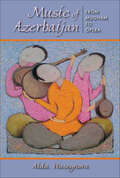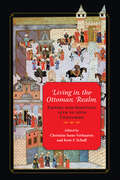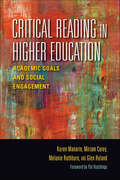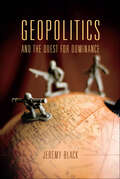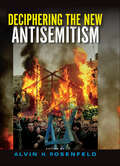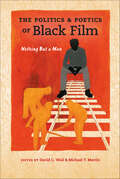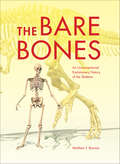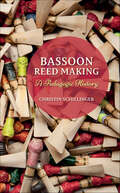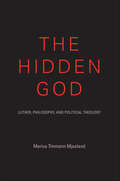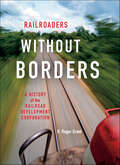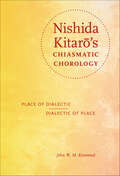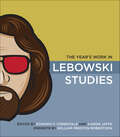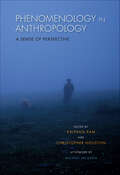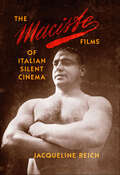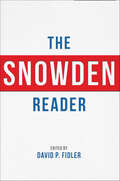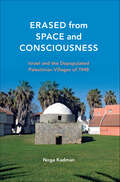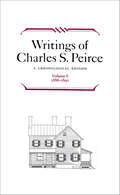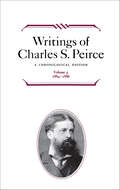- Table View
- List View
The Milan Miracle: The Town that Hoosiers Left Behind
by Lt. Col. Bill RileyWill lightning ever strike twice? Can David beat Goliath a second time? These questions haunt everyone in the small town of Milan, Indiana, whose basketball team inspired Hoosiers, the greatest underdog sports movie ever made. From a town of just 1,816 residents, the team remains forever an underdog, but one with a storied past that has them eternally frozen in their 1954 moment of glory. Every ten years or so, Milan has a winning season, but for the most part, they only manage a win or two each year. And still, perhaps because it's the only option for Milan, the town believes that the Indians can rise again. Bill Riley follows the modern day Indians for a season and explores how the Milan myth still permeates the town, the residents, and their high level of expectations of the team. Riley deftly captures the camaraderie between the players and their coach and their school pride in being Indians. In the end, there are few wins or causes for celebration—there is only the little town where basketball is king and nearly the whole town shows up to watch each game. The legend of Milan and Hoosiers is both a blessing and a curse.
Ponderings II–VI: Black Notebooks, 1931–1938 (Studies in Continental Thought)
by Martin HeideggerPonderings II–VI begins the much-anticipated English translation of Martin Heidegger's "Black Notebooks." In a series of small notebooks with black covers, Heidegger confided sundry personal observations and ideas over the course of 40 years. The five notebooks in this volume were written between 1931 and 1938 and thus chronicle Heidegger's year as Rector of the University of Freiburg during the Nazi era. Published in German as volume 94 of the Complete Works, these challenging and fascinating journal entries shed light on Heidegger's philosophical development regarding his central question of what it means to be, but also on his relation to National Socialism and the revolutionary atmosphere of the 1930s in Germany. Readers previously familiar only with excerpts taken out of context may now determine for themselves whether the controversy and censure the "Black Notebooks" have received are deserved or not. This faithful translation by Richard Rojcewicz opens the texts in a way that captures their philosophical and political content while disentangling Heidegger's notoriously difficult language.
Little Indiana: Small Town Destinations
by Jessica NunemakerWhere was James Dean's hometown? What do A. J. Foyt, Mario Andretti, and Al Unser have in common besides winning the Indianapolis 500? Where was the world's first theme park? Find these answers and more in Little Indiana: Small Town Destinations. Featuring towns of 15,000 or fewer inhabitants, Little Indiana explores where to eat, stay, play, and shop in over 90 small towns. After six years of traveling the state in search of amazing local experiences, blogger and TV host Jessica Nunemaker shares a treasure trove of what to expect in Hoosier small towns. Perfect for any length of excursion—day or weekend—the book is organized by region and town and provides travelers easy access to information found nowhere else. From wineries to antique shops, alpaca farms to chocolate stores, unique attractions are awaiting discovery. Full-color images showcase specialty stores, mouth-watering meals, and exciting attractions tucked off the beaten path. Proof that there's always something to do in a small town, this book is the perfect way to kick-start your next Indiana adventure!
Congratulations on Your Martyrdom!
by Zachary Tyler VickersSearing, troubling, and funny, these revolutionary, linked stories flit and dart among the shadows of small town life, and the touching and heartbreaking characters that occupy it. Employees use roadkill instead of faux pelts during a build-a-critter battle for mall supremacy. Former band geeks are harassed with mutilated musical instruments and then murdered. The collection is haunted by allusions to a fatal cannonball jump that crescendos in the explosive final story. An extraordinary addition to the canon of gonzo fiction, Congratulations on Your Martyrdom! introduces Zachary Tyler Vickers as an exciting new author whose unflinching prose grabs you and won't let go.
Heidegger in France (Studies in Continental Thought)
by Dominique JanicaudDominique Janicaud claimed that every French intellectual movement—from existentialism to psychoanalysis—was influenced by Martin Heidegger. This translation of Janicaud's landmark work, Heidegger en France, details Heidegger's reception in philosophy and other humanistic and social science disciplines. Interviews with key French thinkers such as Françoise Dastur, Jacques Derrida, Éliane Escoubas, Jean Greisch, Philippe Lacoue-Labarthe, Jean-Luc Marion, and Jean-Luc Nancy are included and provide further reflection on Heidegger's relationship to French philosophy. An intellectual undertaking of authoritative scope, this work furnishes a thorough history of the French reception of Heidegger's thought.
The Legacy of Dell Hymes: Ethnopoetics, Narrative Inequality, and Voice (Encounters: Explorations In Folklore And Ethnomusicology Ser.)
by Anthony K. Webster Paul V. KroskrityThe accomplishments and enduring influence of renowned anthropologist Dell Hymes are showcased in these essays by leading practitioners in the field. Hymes (1927–2009) is arguably best known for his pioneering work in ethnopoetics, a studied approach to Native verbal art that elucidates cultural significance and aesthetic form. As these essays amply demonstrate, nearly six decades later ethnopoetics and Hymes's focus on narrative inequality and voice provide a still valuable critical lens for current research in anthropology and folklore. Through ethnopoetics, so much can be understood in diverse cultural settings and situations: gleaning the voices of individual Koryak storytellers and aesthetic sensibilities from century-old wax cylinder recordings; understanding the similarities and differences between Apache life stories told 58 years apart; how Navajo punning and an expressive device illuminate the work of a Navajo poet; decolonizing Western Mono and Yokuts stories by bringing to the surface the performances behind the texts written down by scholars long ago; and keenly appreciating the potency of language revitalization projects among First Nations communities in the Yukon and northwestern California. Fascinating and topical, these essays not only honor a legacy but also point the way forward.
Music of Azerbaijan: From Mugham to Opera (Ethnomusicology Multimedia)
by Aida HuseynovaThis book traces the development of Azerbaijani art music from its origins in the Eastern, modal, improvisational tradition known as mugham through its fusion with Western classical, jazz, and world art music. Aida Huseynova places the fascinating and little-known history of music in Azerbaijan against the vivid backdrop of cultural life under Soviet influence, which paradoxically both encouraged and repressed the evolution of national musics and post-Soviet independence. Inspired by their neighbors to the East and West, Azerbaijani musicians enjoyed a period of remarkable creativity, composing and performing the first opera and the first ballet in the Muslim East, establishing the region's first Opera and Ballet Theater and Conservatory of Music, and discovering ways to merge the modal lyricism of mugham with the rhythmic dynamics of jazz. Drawing on previously unstudied archives, letters, and documents as well as her experience as an Azerbaijani musician and educator, Huseynova shows how Azerbaijani musical development was not a product of Soviet cultural policies but rather grew from and reflected deep and complex cultural processes.
Living in the Ottoman Realm: Empire and Identity, 13th to 20th Centuries
by Kent F. Schull Christine Isom-VerhaarenLiving in the Ottoman Realm brings the Ottoman Empire to life in all of its ethnic, religious, linguistic, and geographic diversity. The contributors explore the development and transformation of identity over the long span of the empire's existence. They offer engaging accounts of individuals, groups, and communities by drawing on a rich array of primary sources, some available in English translation for the first time. These materials are examined with new methodological approaches to gain a deeper understanding of what it meant to be Ottoman. Designed for use as a course text, each chapter includes study questions and suggestions for further reading.
Critical Reading in Higher Education: Academic Goals and Social Engagement (Scholarship of Teaching and Learning)
by Glen Ryland Melanie Rathburn Karen Manarin Miriam CareyFaculty often worry that students can't or won't read critically, a foundational skill for success in academic and professional endeavors. "Critical reading" refers both to reading for academic purposes and reading for social engagement. This volume is based on collaborative, multidisciplinary research into how students read in first-year courses in subjects ranging from scientific literacy through composition. The authors discovered the good (students can read), the bad (students are not reading for social engagement), and the ugly (class assignments may be setting students up for failure) and they offer strategies that can better engage students and provide more meaningful reading experiences.
Geopolitics and the Quest for Dominance
by Jeremy BlackHistory and geography delineate the operation of power, not only its range but also the capacity to plan and the ability to implement. Approaching state strategy and policy from the spatial angle, Jeremy Black argues that just as the perception of power is central to issues of power, so place, and its constraints and relationships, is partly a matter of perception, not merely map coordinates. Geopolitics, he maintains, is as much about ideas and perception as it is about the actual spatial dimensions of power. Black's study ranges widely, examining geography and the spatial nature of state power from the 15th century to the present day. He considers the rise of British power, geopolitics and the age of Imperialism, the Nazis and World War II, and the Cold War, and he looks at the key theorists of the latter 20th century, including Henry Kissinger, Francis Fukuyama and Samuel P. Huntington, Philip Bobbitt, Niall Ferguson, and others.
Deciphering the New Antisemitism (Studies in Antisemitism)
by Alvin H. RosenfeldDeciphering the New Antisemitism addresses the increasing prevalence of antisemitism on a global scale. Antisemitism takes on various forms in all parts of the world, and the essays in this wide-ranging volume deal with many of them: European antisemitism, antisemitism and Islamophobia, antisemitism and anti-Zionism, and efforts to demonize and delegitimize Israel. Contributors are an international group of scholars who clarify the cultural, intellectual, political, and religious conditions that give rise to antisemitic words and deeds. These landmark essays are noteworthy for their timeliness and ability to grapple effectively with the serious issues at hand.
The Politics & Poetics of Black Film: Nothing But a Man (Studies in the Cinema of the Black Diaspora)
by Michael T. Martin David C. WallWritten and directed by two white men and performed by an all-black cast, Nothing But a Man (Michael Roemer, 1964) tells the story of a drifter turned family man who struggles with the pressures of small-town life and the limitations placed on him and his community in the Deep South, an area long fraught with racism. Though unmistakably about race and civil rights, the film makes no direct reference to the civil rights movement. Despite this intentional absence, contemporary audiences were acutely aware of the social context for the film's indictment of white prejudice in America. To help frame and situate the film in the context of black film studies, the book gathers primary and secondary resources, including the original screenplay, essays on the film, statements by the filmmakers, and interviews with Robert M. Young, the film's producer and cinematographer, and Khalil Gibran Muhammad, the Director of the Schomburg Center for Research in Black Culture.
The Bare Bones: An Unconventional Evolutionary History of the Skeleton (Life of the Past)
by Matthew F. BonnanWhat can we learn about the evolution of jaws from a pair of scissors? How does the flight of a tennis ball help explain how fish overcome drag? What do a spacesuit and a chicken egg have in common? Highlighting the fascinating twists and turns of evolution across more than 540 million years, paleobiologist Matthew Bonnan uses everyday objects to explain the emergence and adaptation of the vertebrate skeleton. What can camera lenses tell us about the eyes of marine reptiles? How does understanding what prevents a coffee mug from spilling help us understand the posture of dinosaurs? The answers to these and other intriguing questions illustrate how scientists have pieced together the history of vertebrates from their bare bones. With its engaging and informative text, plus more than 200 illustrative diagrams created by the author, The Bare Bones is an unconventional and reader-friendly introduction to the skeleton as an evolving machine.
Bassoon Reed Making: A Pedagogic History
by Christin SchillingerWithheld by leading pedagogues in an effort to control competition, the art of reed making in the early 20th century has been shrouded in secrecy, producing a generation of performers without reed making fluency. While tenets of past decades remain in modern pedagogy, Christin Schillinger details the historical pedagogical trends of bassoon reed making to examine the impact different methods have had on the practice of reed making and performance today. Schillinger traces the pedagogy of reed making from the earliest known publication addressing bassoon pedagogy in 1687 through the publication of Julius Weissenborn's Praktische Fagott-Schule and concludes with an in-depth look at contemporary methodologies developed by Louis Skinner, Don Christlieb, Norman Herzberg, and Lewis Hugh Cooper. Aimed at practitioners and pedagogues of the bassoon, this book provides a deeper understanding of the history and technique surrounding reed-making craft and instruction.
The Hidden God: Luther, Philosophy, and Political Theology (Philosophy of Religion)
by Marius Timmann MjaalandIn this phenomenological reading of Luther, Marius Timmann Mjaaland shows that theological discourse is never philosophically neutral and always politically loaded. Raising questions concerning the conditions of modern philosophy, religion, and political ideas, Marius Timmann Mjaaland follows a dark thread of thought back to its origin in Martin Luther. Thorough analyses of the genealogy of secularization, the political role of the apocalypse, the topology of the self, and the destruction of metaphysics demonstrate the continuous relevance of this highly subtle thinker.rabbi
Railroaders without Borders: A History of the Railroad Development Corporation (Railroads Past and Present)
by H. Roger GrantFor over 25 years, the creatively led Railroad Development Corporation (RDC) has rejuvenated a series of down-and-out and even defunct railroads. Launched in 1987 by Henry Posner III, this investment and management company has demonstrated that it is possible both to have a conscience and to earn a profit in today's railroad industry. With ventures on four continents, RDC has created an admirable record of long-term commitments, respect for local cultures, and protection of the public interest. H. Roger Grant presents a firsthand look at this unique business operation and its triumphs and disappointments.
Nishida Kitaro's Chiasmatic Chorology: Place of Dialectic, Dialectic of Place (World Philosophies)
by John W. KrummelNishida Kitaro (1870–1945) is considered Japan's first and greatest modern philosopher. As founder of the Kyoto School, he began a rigorous philosophical engagement and dialogue with Western philosophical traditions, especially the work of G. W. F. Hegel. John W. M. Krummel explores the Buddhist roots of Nishida's thought and places him in connection with Hegel and other philosophers of the Continental tradition. Krummel develops notions of self-awareness, will, being, place, the environment, religion, and politics in Nishida's thought and shows how his ethics of humility may best serve us in our complex world.
The Year's Work in Lebowski Studies (The Year's Work)
by William Preston RobertsonA massive underground sensation, The Big Lebowski has been hailed as the first cult film of the internet age. In this book, 21 fans and scholars address the film's influences—westerns, noir, grail legends, the 1960s, and Fluxus—and its historical connections to the first Iraq war, boomers, slackerdom, surrealism, college culture, and of course bowling. The Year's Work in Lebowski Studies contains neither arid analyses nor lectures for the late-night crowd, but new ways of thinking and writing about film culture.
Phenomenology in Anthropology: A Sense of Perspective
by Michael JacksonThis volume explores what phenomenology adds to the enterprise of anthropology, drawing on and contributing to a burgeoning field of social science research inspired by the phenomenological tradition in philosophy. Essays by leading scholars ground their discussions of theory and method in richly detailed ethnographic case studies. The contributors broaden the application of phenomenology in anthropology beyond the areas in which it has been most influential—studies of sensory perception, emotion, bodiliness, and intersubjectivity—into new areas of inquiry such as martial arts, sports, dance, music, and political discourse.
The Maciste Films of Italian Silent Cinema
by Jacqueline ReichItalian film star Bartolomeo Pagano's "Maciste" played a key role in his nation's narratives of identity during World War I and after. Jacqueline Reich traces the racial, class, and national transformations undergone by this Italian strongman from African slave in Cabiria (1914), his first film, to bourgeois gentleman, to Alpine soldier of the Great War, to colonial officer in Italy's African adventures. Reich reveals Maciste as a figure who both reflected classical ideals of masculine beauty and virility (later taken up by Mussolini and used for political purposes) and embodied the model Italian citizen. The 12 films at the center of the book, recently restored and newly accessible to a wider public, together with relevant extra-cinematic materials, provide a rich resource for understanding the spread of discourses on masculinity, and national and racial identities during a turbulent period in Italian history. The volume includes an illustrated appendix documenting the restoration and preservation of these cinematic treasures.
The Snowden Reader
by David P. FidlerWhen Edward Snowden began leaking NSA documents in June 2013, his actions sparked impassioned debates about electronic surveillance, national security, and privacy in the digital age. The Snowden Reader looks at Snowden's disclosures and their aftermath. Critical analyses by experts discuss the historical, political, legal, and ethical issues raised by the disclosures. Over forty key documents related to the case are included, with introductory notes explaining their significance: documents leaked by Snowden; responses from the NSA, the Obama administration, and Congress; statements by foreign leaders, their governments, and international organizations; judicial rulings; findings of review committees; and Snowden's own statements. This book provides a valuable introduction and overview for anyone who wants to go beyond the headlines to understand this historic episode.
Peasant Fires: The Drummer of Niklashausen
by Richard Wunderli" . . . lively and intellectually stimulating . . . " —Speculum"Wunderli . . . has lucidly reconstructed a controversial conflict in 15th-century south-central Germany. . . . this engaging narrative takes off from Hans Behem—the peasant who claimed to see the Virgin and gained followers until crushed by the established church—to explore larger forces at work in Germany on the eve of the Reformation. . . Wunderli also attempts to sort out the violent conflict that ensued and Hans's subsequent trial. His scrupulousness and sensitivity make for a small but valuable book." —Publishers Weekly"Fascinating and well written, this is highly recommended for academic and larger public libraries." —Library Journal"Richard Wunderli . . . deftly tells the story in Peasant Fires, finding in it a foreshadowing of peasant uprisings in the 16th century." —New York Times Book Review" . . . a stimulating read . . . an engaging synthesis." —Central European HistoryIn 1476, an illiterate German street musician had a vision of the Virgin Mary and began to preach a radical social message that attracted thousands of followers—and antagonized the church. The drummer was burned at the stake. This swiftly moving narrative of his rise and fall paints a vivid portrait of 15th-century German society as it raises important questions about the craft of history."A gem of a book. . . . It has a plot, good guys and bad buys, it opens up a 'strange' world, and it is exceptionally well written." —Thomas W. Robisheaux
Erased from Space and Consciousness: Israel and the Depopulated Palestinian Villages of 1948
by Noga KadmanHundreds of Palestinian villages were left empty across Israel when their residents became refugees after the 1948 war, their lands and property confiscated. Most of the villages were razed by the new State of Israel, but in dozens of others, communities of Jews were settled—many refugees in their own right. The state embarked on a systematic effort of renaming and remaking the landscape, and the Arab presence was all but erased from official maps and histories. Israelis are familiar with the ruins, terraces, and orchards that mark these sites today—almost half are located within tourist areas or national parks—but public descriptions rarely acknowledge that Arab communities existed there within living memory or describe how they came to be depopulated. Using official archives, kibbutz publications, and visits to the former village sites, Noga Kadman has reconstructed this history of erasure for all 418 depopulated villages.
Writings of Charles S. Peirce: A Chronological Edition (Writings of Charles S. Peirce)
by Charles S. PeirceVolume 6 of this landmark edition contains 66 writings mainly from the unsettled period in Peirce's life just after he moved from New York to Milford, Pennsylvania, followed shortly afterward by the death of his mother. The writings in this volume reveal Peirce's powerful mind probing into diverse issues, looking for an underlying unity, but, perhaps, also looking for direction.
Writings of Charles S. Peirce: A Chronological Edition (Writings of Charles S. Peirce)
by Charles S. Peirce"Highly recommended." —Choice" . . . an important event for the world of philosophy. For the first time we have available in an intelligible form the writings of one of the greatest philosophers of the past hundred years." —The Times Literary SupplementVolume 5 of this landmark edition covers an important transition in Peirce's life, marked by a rekindled enthusiasm for speculative philosophy. The writings include essays relating to his all-embracing theory of categories as well as papers on logic and mathematics.
